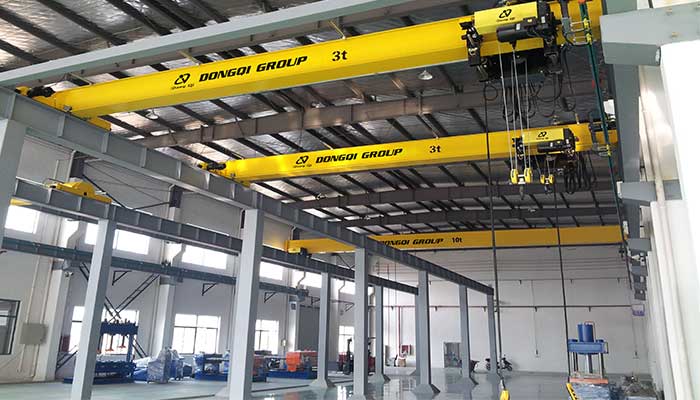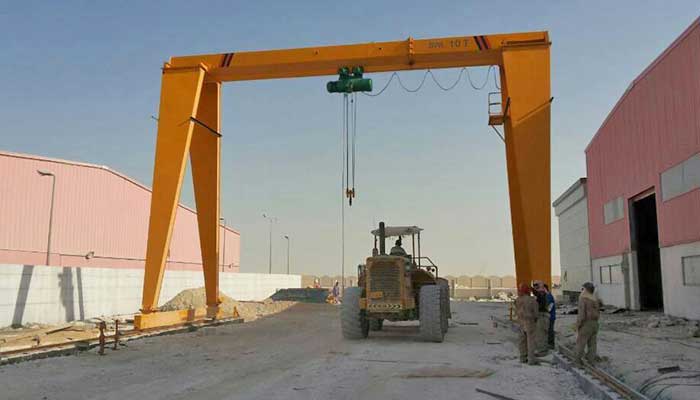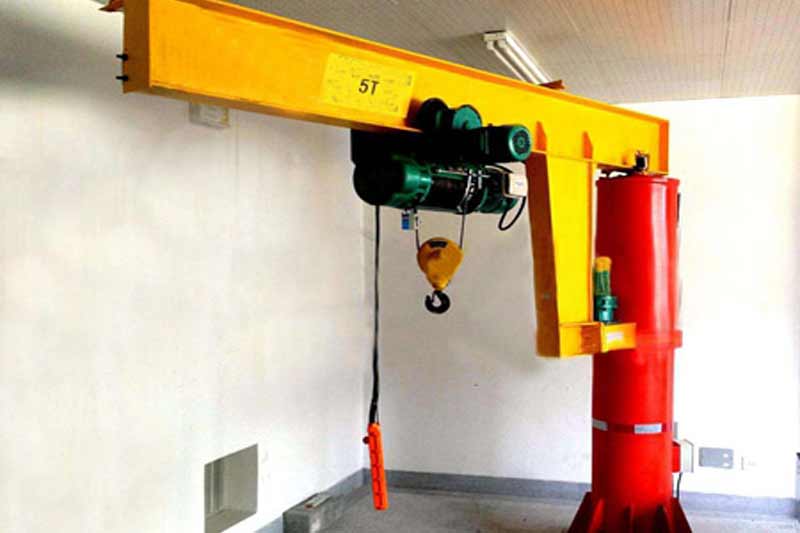Pendant Control Crane, Custom Pendant Controlled Overhead Crane
Pendant Control Cranes for Sale ,Custom Pendant Controlled Overhead Cranes
Cranes stand as pivotal tools in various industries, aiding in the movement of heavy loads and streamlining logistical operations. Among the array of crane systems available, pendant control cranes hold a special place for their precision and efficiency in handling overhead tasks. In this comprehensive guide, we delve into the world of pendant control cranes, exploring their functionalities, advantages, applications, and considerations for potential buyers and users.
Crane Operations: A Brief Overview
Crane operations involve the lifting and movement of heavy objects within a specified area, facilitating tasks that would otherwise be challenging or impossible for human labor alone. These machines are integral across diverse sectors, from manufacturing plants to construction sites and shipping yards. Over time, technological advancements have led to the development of more sophisticated and efficient crane systems, among which pendant-controlled overhead cranes have emerged as a game-changer.
Pendant control cranes, also known as pendant-controlled overhead cranes, offer a heightened level of control and precision in material handling operations. These cranes are equipped with a control pendant, providing operators with direct, hands-on control over the crane's movements and functions. The significance of pendant control cranes lies in their ability to enhance operational efficiency while ensuring safety and accuracy in lifting and maneuvering heavy loads.
Pendant-controlled overhead cranes are a type of lifting equipment where the operator uses a handheld pendant to control the crane's movements. The pendant, typically connected to the crane via a wired or wireless system, contains buttons or switches corresponding to specific crane functions, allowing the operator to command the crane's motions, such as lifting, lowering, traversing, and trolley movement.
The primary purpose of these cranes is to streamline material handling processes by offering precise control over load placement and movement. This level of control significantly reduces the chances of errors and accidents while improving overall operational efficiency.
Pendant control cranes find extensive use in various industries, including manufacturing, warehousing, construction, and more, owing to their versatility and adaptability to different work environments.
Pendant Control Overhead Crane

Pendant controlled gantry crane

What are Pendant Control Cranes?
Pendant control cranes represent a class of overhead lifting systems where operators wield a handheld pendant, directing the crane's movements and functions. These cranes, versatile in nature, are employed for precise material handling tasks across industries.
- Definition and Basic Components:At the core of a pendant control crane lies the pendant itself, a handheld device connected to the crane by a cable or through wireless technology. The pendant contains control buttons or switches that correspond to specific crane operations, allowing the operator to manipulate the crane's movements with precision.
- Functionality and Operational Mechanism:The operational mechanism of pendant control cranes involves the utilization of the pendant to control various aspects of crane movement. This includes lifting, lowering, horizontal movement (traversing), and trolley motion. The operator's commands through the pendant initiate these functions within the crane's mechanical system.
Key Components of a Pendant Control System
- Pendant Stations and Their Functionalities:Pendant stations, designed ergonomically for operator ease, consist of buttons or switches that control the crane's movements. These stations may include emergency stop buttons, speed control settings, and other specific functions crucial for safe and efficient crane operation.
- Control Panels and Their Role in Crane Operation:Control panels, integral to pendant control systems, facilitate seamless communication between the operator and the crane's mechanical components. They interpret the commands from the pendant and translate them into actions, ensuring precise and accurate execution of operations.
Safety Measures and Standards
- Importance of Safety in Pendant-Controlled Operations:Safety stands as a paramount consideration in pendant-controlled crane operations. Precision in control must align with stringent safety measures to prevent accidents, injury, or damage to materials and equipment.
- Compliance with Safety Regulations and Industry Standards:Adherence to safety regulations and industry standards is non-negotiable in the design, installation, and operation of pendant control cranes. Compliance ensures a safe working environment and reduces the risk of operational hazards.
Safety remains a critical aspect of pendant-controlled operations, dictating the design, functionality, and usage guidelines of these crane systems. Understanding these components and safety measures is crucial for efficient and secure crane operation across industries.
Advantages of Pendant Control Cranes
Enhanced Precision and Maneuverability
Pendant control cranes excel in providing unparalleled precision and maneuverability during material handling operations. The direct control offered by the pendant allows operators to make minute adjustments, ensuring exact positioning and movement of loads. This precision is particularly valuable in tasks that require careful placement or navigating through confined spaces where accuracy is critical.
Increased Operator Control and Visibility
Operators wield significant control when using pendant-controlled overhead cranes. The handheld pendant enables them to be in close proximity to the load, affording better visibility and allowing them to make real-time adjustments based on the operational needs. This enhanced control and visibility minimize the chances of errors, thereby improving operational efficiency and safety.
Flexibility and Adaptability in Various Work Environments
Pendant control cranes showcase remarkable adaptability across diverse work environments. Their versatility enables seamless integration into different settings, whether it's a manufacturing facility with intricate assembly lines or a warehouse requiring precise material placement. The flexibility of these cranes in adapting to varying operational demands enhances their utility across industries.
Efficiency and Productivity in Material Handling Tasks
Efficiency and productivity are hallmarks of pendant-controlled overhead cranes. The direct operator control streamlines operations, reducing the time required for tasks such as loading, unloading, and transferring materials. By minimizing human effort and streamlining processes, these cranes significantly boost productivity, contributing to overall operational efficiency.
Pendant control cranes stand out for their ability to offer precision, control, adaptability, and efficiency, making them indispensable assets in industries where precise material handling is crucial. These advantages translate into cost-effectiveness and operational excellence, making pendant control cranes a preferred choice for many businesses seeking optimized material handling solutions.
Factors to Consider When Choosing a Pendant Control Crane
Load Capacity and Crane Specifications
- Load Capacity:Determining the maximum weight a pendant control crane needs to lift is crucial. Select a crane with a load capacity that accommodates the heaviest loads expected in your operations.
- Crane Specifications:Consider factors like lifting height, span, and speed requirements to ensure the crane's specifications align with your operational needs.
Environment and Operational Conditions
- Work Environment:Evaluate the environmental conditions where the crane will operate. Factors like temperature, humidity, and exposure to corrosive elements influence the choice between different crane materials and coatings.
- Space Constraints:Assess available space for the crane's installation and movement. Choose a crane design that optimizes space without compromising functionality.
Safety Features and Compliance
- Safety Standards:Ensure the crane complies with industry safety standards and regulations. Look for features like overload protection, emergency stop mechanisms, and collision avoidance systems.
- Operator Safety:Consider features that enhance operator safety, such as anti-sway systems and ergonomic pendant designs, reducing the risk of fatigue-related errors.
Maintenance and Support Services
- Maintenance Requirements:Evaluate the maintenance needs of the crane. Opt for a system that offers ease of maintenance and reliability to minimize downtime.
- Support Services:Consider the availability of support services, including maintenance contracts, spare parts availability, and technical support from the manufacturer or supplier.
Choosing the right pendant control crane involves a thorough assessment of load requirements, environmental factors, safety features, and the level of support and maintenance requirePrioritizing these factors ensures the selected crane system aligns with operational needs while maintaining safety and reliability standards.
Tips for Efficient Operation and Maintenance
Operator Training and Skill Development
- Comprehensive Training Programs:Provide thorough training to operators on pendant control crane operation, focusing on safety protocols, equipment familiarity, and efficient utilization of the control system.
- Continual Skill Development:Encourage ongoing skill enhancement through refresher courses and updates on new features or advancements in pendant control systems.
Routine Inspection and Maintenance Practices
- Scheduled Inspections:Implement regular checks of the crane components, such as cables, buttons, and mechanical parts, to identify wear and tear, ensuring optimal functionality.
- Maintenance Schedules:Adhere to manufacturer-recommended maintenance schedules for lubrication, adjustments, and component replacements to prevent unexpected breakdowns.
Troubleshooting Common Issues
- Troubleshooting Protocols:Equip maintenance personnel with troubleshooting guides and procedures to swiftly address common issues, ensuring minimal downtime.
- Prompt Response:Encourage a proactive approach to swiftly resolve any operational discrepancies or malfunctions to maintain continuous workflow.
Upgrading and Modernizing Pendant Control Systems
- Regular System Evaluation:Periodically assess the efficiency and relevance of the current pendant control system. Consider upgrading to newer models or technologies for improved functionality and safety.
- Integration of Modern Features:Explore options for integrating modern features like automation, remote monitoring, or predictive maintenance systems to enhance overall system efficiency.
Efficient operation and maintenance of pendant control cranes rely on comprehensive training, regular inspections, prompt issue resolution, and a proactive approach to system upgrades. These tips ensure optimal performance, longevity, and safety of the equipment, contributing to a seamless workflow in industrial operations.
How to select Right Overhead Pendant Controller for Your Cranes ?
When choosing a replacement pendant station for an overhead crane, several critical considerations should guide your decision-making process. Here are the key points explained in more detail:
Functions Control:
Number of Functions:Assess the number of functions you need to control. For instance, a basic pendant might control only the up-down action of the hoist. A more advanced one might have two functions for a monorail crane, enabling control over both the hoist and trolley. For more complex systems, you might require three functions, managing the hoist, trolley, and bridge functions simultaneously.
Speed Control:
Speed Variability:Determine the required speed control. Depending on your operational needs, you may require a single-speed pendant for basic movements or a multi-speed pendant offering different speed settings for precise control. The choice could range from a single speed, five-speed, or something in between to meet specific operational demands.
Start-Stop Circuit:
- Start-Stop Mechanism:Evaluate the start-stop circuit needed for your crane operations. There are two primary types:
- Maintain Start-Stop:This type locks the control circuit into place when the start button is pressed until the stop button is engageIt maintains continuity until deliberately stoppe
- Momentary Start-Stop:With this type, the start button controls a seal-in circuit on the mainline contactor, keeping the circuit closed until the stop button is presseIt allows the crane operator to momentarily pause crane movement without locking it in position.
Emergency Stop (E-stop):
Emergency Stop Functionality:Determine if your crane is equipped with an emergency stop (E-stop) feature. If so, ensure the replacement pendant includes an emergency stop button for immediate halting of crane operations in case of emergencies.
Environmental Considerations:
Environmental Conditions:Consider the environment in which the crane operates. If it operates in areas prone to moisture, dust, or impacts, you'll need a pendant station that is sealed against these elements or is built to withstand such conditions.
Strain Relief:
- Strain Relief:Evaluate the strain relief mechanism of the pendant. The strain relief cable is crucial for protecting the conductor when the pendant is pulled or stresseTwo common types are:
- Internal Strain Relief:This type has the relief cable running inside the pendant cord, covered by the outer insulation, offering protection from strain within the pendant.
- External Strain Relief:In this type, the relief cable runs externally along the pendant cord, providing protection from external strain when pulle
Considering these factors ensures that the replacement pendant station you choose aligns precisely with your operational requirements, environmental conditions, and safety standards, thereby enhancing the efficiency and longevity of your crane system.
Wrap it Up,
Pendant control cranes stand as indispensable assets across various industries, offering precise control, enhanced maneuverability, and adaptability in material handling operations. Their significance lies in providing operators with direct control over crane movements through a handheld pendant, ensuring accuracy, efficiency, and safety in lifting and positioning heavy loads.
These cranes play a pivotal role in enhancing operational efficiency by streamlining material handling tasks, reducing manual effort, and optimizing workflow. Their contribution to safety cannot be overstated, as they enable operators to maneuver loads with precision, reducing the risk of accidents and ensuring a safer working environment.
For potential buyers and users, informed decision-making is key. Understanding the specific operational needs, considering factors like load capacity, environmental conditions, safety features, and maintenance requirements are vital steps toward selecting the right pendant control crane. Investing in the right equipment tailored to one's requirements ensures optimal performance, reliability, and safety in operations.
In conclusion, pendant control cranes, with their precision, adaptability, and safety features, significantly contribute to operational efficiency across industries. Their role in streamlining material handling processes underscores their importance as indispensable tools in modern industrial operations. Making informed decisions when selecting and maintaining these systems ensures a seamless workflow and optimized productivity for businesses relying on overhead material handling.




